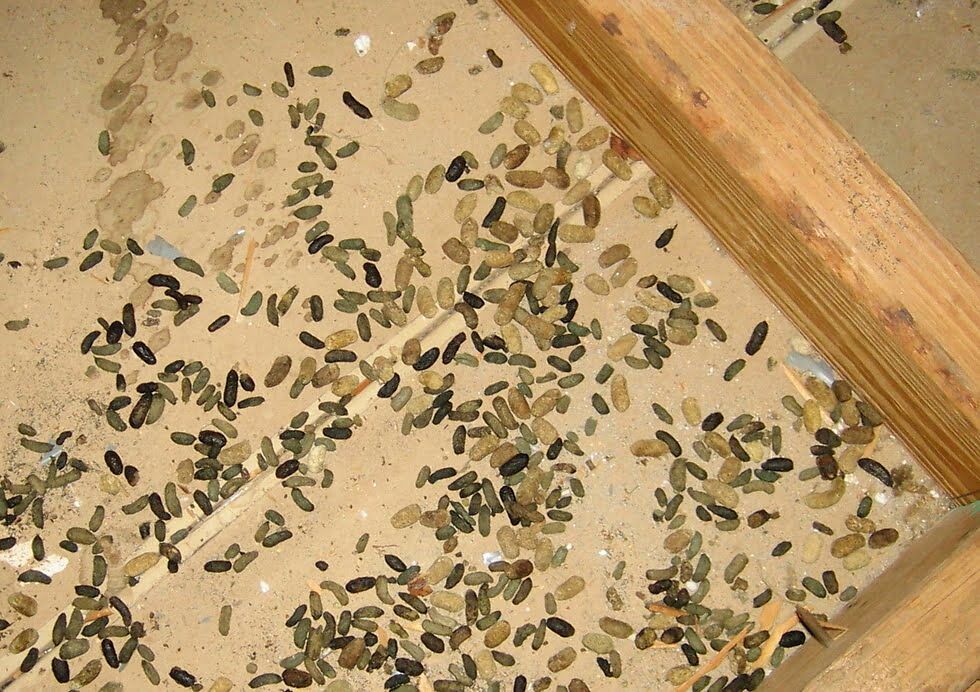Mouse Feces vs. Rat Feces

Rats and mice can be a common pest around the home. However domesticated rats and mice behave in a completely different manner as compared to their wild counterparts. Rats and mice are very similar in appearance. One of the major differences is that rats are generally bigger than mice. If you have a rodent problem in your home and are not sure whether they are rats or mice, then you can examine the feces they leave behind to determine what has invaded your home.
Characteristics Of Droppings
Rat droppings have a dark color and are soft when fresh. Once the droppings have stayed they soon start to fade in color and become harder. Rat droppings range between ½ - ¾ inch (1.27 – 1.905 cm) in length and approximately ¼ inch (0.635 cm) thick. Rat droppings appear long and spindle shaped. Rat droppings have blunt ends. Mice droppings are relatively smaller as compared to rat droppings. The measure about 1/8 – ½ inch in length and have pointed ends.
Number of Droppings per Year
An average sized rat leaves approximately 25,000 droppings per year while an average sized mouse leaves up to 18,000 dropping in a year. Rats and mice generally leave droppings everywhere they move.
Diseases Caused By Rat and Mice Droppings
One of the major problems of rat and mouse droppings is that they carry lots of pathogens that cause human diseases. The following are some diseases that are transmitted to humans through rat and mouse droppings.
Salmonellosis
Salmonellosis arises after an individual has been infected by taking water or food that has been contaminated by bacteria of the salmonella species. Salmonella is found all over the world. Symptoms of Salmonellosis include abdominal cramps, fever and diarrhea. Medical tests are necessary to prove the cause of disease is salmonella. The condition may last up to a week after which the body recovers without the need of medical assistance. Medical assistance is only required when there is a case of life threatening dehydration.
Hantavirus Pulmonary Syndrome
Hantavirus pulmonary syndrome is a disease that is spread through rat and mouse droppings. This infection can be fatal in some cases. Infection occurs through direct contact with feces and urine of rodents. The virus is also spread through inhalation of dust that has been adulterated with contaminated feces. Symptoms of Hantavirus pulmonary syndrome include fatigue, fever and muscle cramps. In advanced stages patients develop shortness of breath and a continuous cough. About 38% of individuals infected by this virus don't make it at all.
Rat Bite Fever
Rat bite fever is a disease that affects many parts of the world and is not only transmitted by rats but by many rodents including mice. Rat bite fever can be contracted from getting a scratch or bite from a rodent or by eating food that has been contaminated. The disease can also be transmitted through drinking water that has come into contact with rodent feces. Symptoms include fever, vomiting, muscle cramps and headache. As infection advances a rash soon appears on the feet and hands. Swollen joints are also associated with this disease. This disease is treated using antibiotics. This disease needs medical assistance because failure to treat the disease has fatal consequences.
Lymphocytic Chorio-meningitis (LCM)
Lymphocytic Chorio-meningitis (LCM) is a disease that is associated with rodents like mice and rats. This disease is usually spread by rats and mice which are commonly found in the house. Humans are infected when they come into contact with contaminated saliva, droppings and nest rodent material. Symptoms begin with a simple fever, lack of appetite and as the disease advances headache, vomiting and muscle cramps can be experienced. Of all the LCM cases reported, less than 1% of the people have died, which makes this disease relatively non-fatal.
How To Deal With Mice and Rat Feces
The best way to deal with mouse and rat droppings is to create a barrier which prevents these rodents from entering your home. Common areas where mice and rats go are ceilings and basements. You can prevent these rodents from entering into ceilings and basements by covering all possible entry points with wire gauze. Mice and rats cannot chew up wire which makes it an effective barrier against these rodents. Use of rat poison may not be a good idea as it creates lots of problems through decomposing carcasses of rats which can also transmit diseases to humans.
Once you have barred rodents from entering your home the next thing to do is clean up all areas that have droppings. When cleaning areas that have droppings, always make sure to use a gas mask to avoid being infected with particles that have dried and become airborne. Use disinfectants to kill bacteria and other germs that may be harbored in places where rodents were frequenting. After cleaning out all rodent droppings allow for proper ventilation. This way you will reduce the chances of being infected by diseases from mouse and rat droppings.